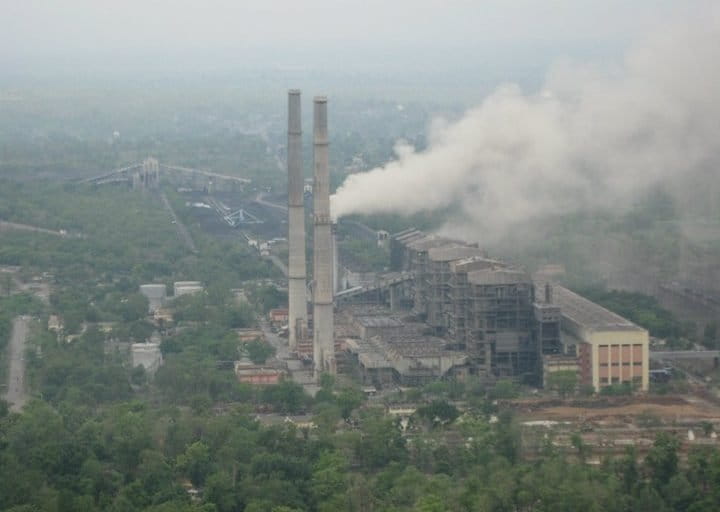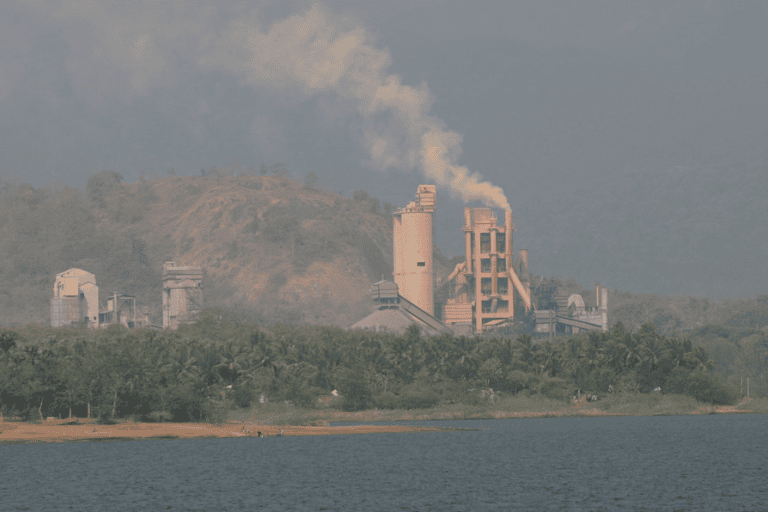- In 2014, the Central Pollution Control Board (CPCB) directed highly polluting industries to install continuous emissions monitoring systems (CEMS), to track pollution from them.
- The pollution board now wants to extend installation of the system on industries beyond those listed in the 17 categories of highly polluting industries and is pitching it as a self regulation tool.
- Though the CPCB says the system is giving positive results, questions on certification of the equipment and authenticity of data collected still linger.
Following efforts to tighten the noose around highly polluting industries, India’s Central Pollution Control Board (CPCB), is now pushing for ‘self regulation’ through installation of the continuous emissions monitoring systems (CEMS) even in industries not listed as ‘highly polluting’. Over the past few years, the country’s pollution watchdog has mandated for installation of CEMS in highly polluting industries to track their emissions and is now encouraging other industries to adopt a similar system.
Over the last 10 years, northern India has witnessed high levels of air pollution which led to the introduction of continuous real-time monitoring system (CEMS) for real-time tracking of pollution from industries and taking action against the errant ones.
In February 2014, the CPCB first issued directions under the Air and Water Acts for installation of continuous emission monitoring systems and continuous effluent monitoring systems in 17 categories of highly polluting industries, across India. These industries include pulp and paper, distillery, sugar, tanneries, power plants, iron & steel, cement, oil refineries, fertiliser, chloralkali plants, dye & dye intermediate units, pesticides, zinc, copper, aluminium, petrochemicals and pharma units.
It also asked for installation of these systems in the common effluent treatment plants (CETPs), sewage treatment plants (STPs), common bio-medical waste and common hazardous waste incinerators. The industry then ensures that the data is continuously made available to the pollution control boards.

A tool for self regulation
A CEMS system basically comprises of equipment that determines “the concentration of gaseous emission/particulate matter/emission rate using analytical measurements and a computer program to provide results in units of the applicable emission limits or standards”. It tracks pollutants such as particulate matter, ammonia, sulphur dioxide, oxides of nitrogen, chlorine, hydrochloric acid, hydrofluoric acid and others. Limits have been imposed by the CPCB on the quantum of emissions that an industry is permitted to release to the air, soil or water for a particular pollutant.
In July 2017, the CPCB issued guidelines for streamlining the CEMS process. Subsequently, in August 2018, the pollution watchdog has come up with the revised guidelines for CEMS.
“The industries falling in 17 categories of highly polluting industries, common bio-medical waste and common hazardous waste incinerators have to install Continuous Emission Monitoring System (CEMS). Industries other than 17 categories should consider installation of CEMS system as a tool of self-regulation,” said the revised 2018 guidelines.
The revised guidelines also provide detailed technical safeguards to ensure that the monitoring is properly done and not manipulated with.
While enlisting requirements of an efficient online particulate matter CEMS, the guidelines also held that the system must be able to “operate over a long duration in the application without the need for frequent maintenance or cleaning”.
“CEMS has proven to be highly successful for us. It has brought in discipline, transparency and ensured compliance of pollution control norms. As they have been installed based on the polluter pays principal there is no burden on us,” said a senior CPCB official.
Given that the CPCB doesn’t have enough staff to physically check all the industries, the self-regulation system is more optimal method and also ensures transparency.
“Whenever the automatic system records persistent violation and emission/effluents cross permissible limits, messages are automatically generated and sent to concerned officials. On the basis of such reports, notices are issued and in many cases, closure directions to industries are also issued. They are only allowed to reopen once they start complying with the pollution norms,” the official added.
Even though CEMS was under discussion for years, a serious and definite push for CEMS was made under the ongoing tenure of the National Democratic Alliance (NDA) government.
In 2016, the then environment minister Prakash Javadekar had said that “24×7 real-time monitoring of pollution from various industries is a major revolution brought in by the NDA Government.”
“Earlier method of physical sampling and lab testing was found to be inadequate as it could not capture pollution levels all 24 hours. With on-line monitoring, the situation has completely changed and monitoring can be done continuously. We shall also bring about necessary changes in the law to enable the use of online data as legal evidence” Javadekar had said.

Questions over equipment and authenticity of data
However, experts are not convinced about the implementation of CEMS so far. They feel bringing even the non-highly polluting industries is the right way forward but are unsure about the implementation. They are also sceptical of manipulation of data and equipment by the industry.
“In 2014, the CPCB made it mandatory for industries to install CEMS for about 17 categories of highly polluting industries which were around 3,300 in number. But till date, it has failed to address key issues like certification of the equipment being used, the correctness of installation of equipment and authenticity of data. What is problematic is that there is no lab to carry calibration and other tests to certify the equipment. Another issue is the poor maintenance of the installed equipment,” said Sanjeev K. Kanchan, programme manager at the Centre for Science and Environment.
“Without addressing all such issues, the CPCB is now extending the systems to other red category industries as well. The idea of CEMS is good and much awaited but currently it is not being properly implemented. It is all a messed up situation right now,” he added.
Banner image: A power plant in Jhajjar. Photo by Vikramdeep Sidhu /Wikimedia Commons.
